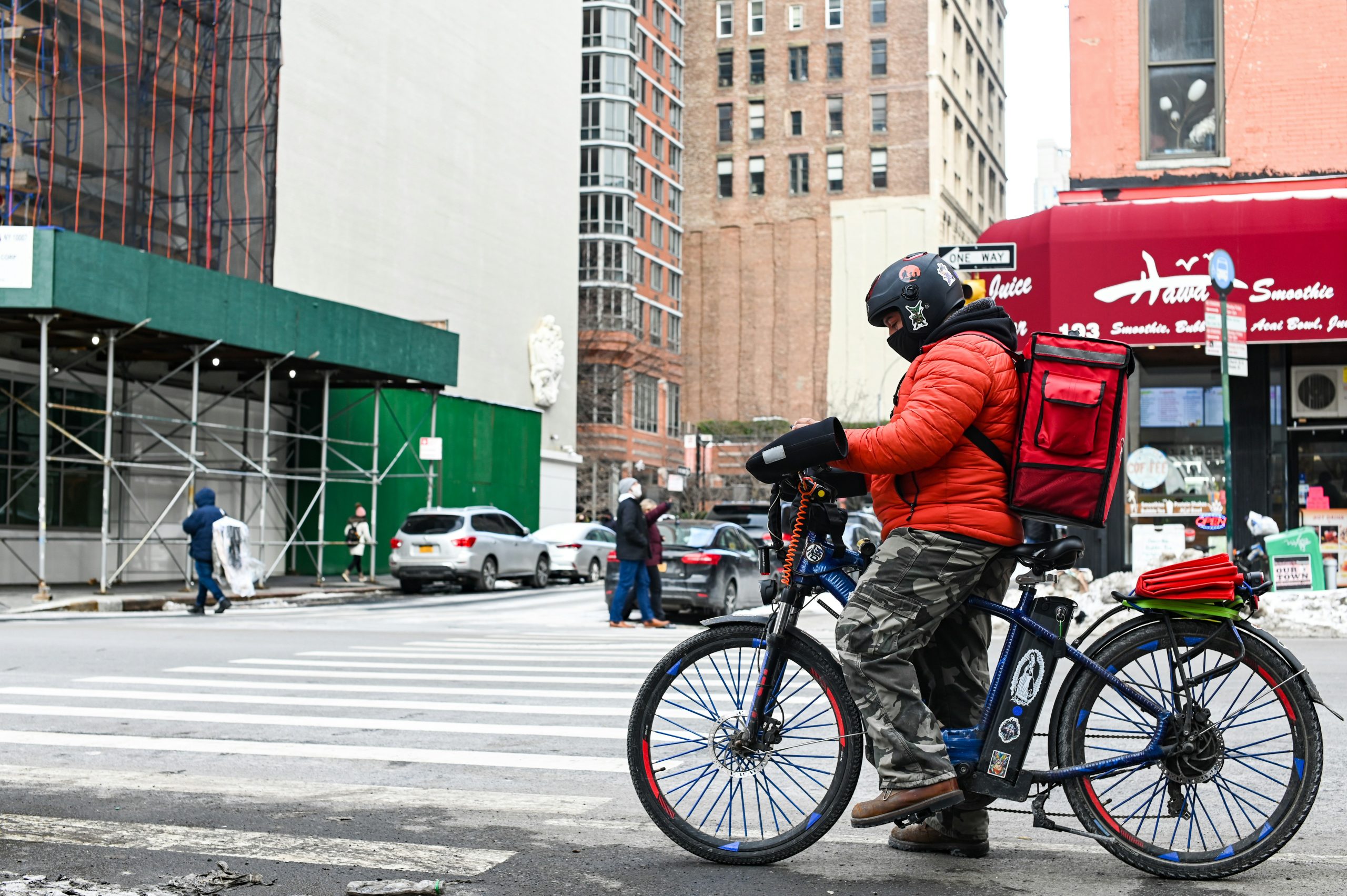
June 20, 2024
Ending Fee Caps on Delivery Apps Would Help Small NYC Restaurants
It’s almost hard to recall that just a few years ago, even indefatigable New Yorkers had trouble going out to eat at a restaurant. As restaurants adjusted to the pandemic’s emergency stay-at-home orders and limited indoor dining, offering delivery and takeout became necessary. Restaurants needed to change how they operated to survive COVID-19. Partnering with third-party food delivery platforms like Grubhub and DoorDash helped keep kitchens open, staff employed, and customers satisfied.
Because the pandemic temporarily ended in-person dining, these platforms enjoyed greater market power–in theory, they could demand whatever price they wanted for their services. With fewer options to reach customers, restaurants were concerned they’d be stuck paying greater fees to delivery platforms or risk going out of business. To avoid profiteering on the part of delivery platforms, New York and cities nationwide capped the fees they could charge restaurants.
Many of these cities have since lifted their fee caps. Why? The pandemic waned, in-person dining options returned, and delivery platforms’ market power decreased. That’s happened in New York, too. However, the city’s fee cap is still in place even though it no longer serves the purpose it did during the COVID-19 pandemic for New York City restaurants.
Because of how customers, delivery companies, restaurants, and delivery drivers relate within the restaurant delivery economy, the fee cap is undermining smaller restaurants that have come to rely on delivery and takeout orders. A recent study by economists at the University of Wisconsin and the University of Delaware found that chain restaurants benefit the most from commission fee caps, while small restaurants lose orders and revenue.
To understand (somewhat counterintuitively) how NYC’s fee caps meant to help small restaurants could actually be hurting them, I spoke with Dr. Apostolos Filippas, an NYC local and Assistant Professor at the Gabelli School of Business, Fordham University. He’s an expert on market design and the economics of technology, primarily in the context of online platforms, and he walked me through some scenarios:
- “Fee caps could make delivering smaller or more remote orders unprofitable. If restaurant delivery app companies cease delivering these orders, smaller businesses and consumers from lower-income neighborhoods face a disproportionate burden.”
- “To make such smaller or more remote orders profitable, restaurant delivery app companies could charge consumers flat fees. But flat fees could turn away more price-sensitive consumers.”
- “Delivery platforms could also cease offering some kinds of restaurant delivery services. Those restaurants would then have to take on order delivery. This is a harder task for smaller and less popular businesses, as well as for new restaurants.”
By capping fees while also mandating a $20 per hour minimum pay for food-delivery workers, New York’s City Council leaves delivery services in a lose-lose situation: either they operate at a loss and go out of business–leaving restaurants without critically needed delivery services–or they’re forced to charge consumers steep fees that make ordering food too expensive for New Yorkers.
In fact, a newly published analysis by the Data Catalyst Institute estimated that DoorDash, Uber Eats, and Grubhub lost between $140.1 million and $160.8 million collectively during 2022 and 2023 because of fee caps in New York City. Worse, the restaurant food delivery companies are now suing New York City, arguing that the rule doesn’t just hurt them and local New Yorkers, but that it’s unconstitutional. If the court rules against New York City, taxpayers will have to foot a multi-million dollar legal bill and compensate delivery companies for fee cap-related losses.
In post-pandemic New York, restaurants should be free to choose whether these fees, and at what level, are right for them. They can choose to use a delivery service like Uber Eats, offer their own delivery service, or not deliver orders at all. As Prof. Filippas told me, “It’s important to note that ‘delivery apps’ don’t just deliver food; they offer many other valuable services to restaurants. These include marketing and payment processing, as well as expanding restaurants’ reach to new customers and geographic areas. Delivery apps also take on the tedious task of ensuring consistent staffing and service, and that delivery work is aligned with labor laws.”
New Yorkers couldn’t stop COVID-19 from closing mom-and-pop joints and old-school steakhouses. What happens next to the city’s restaurant industry is up to city officials, not a disease. While the bill the New York City Council will consider this week gives restaurants the choice of paying for additional services, note that it doesn’t end fee caps entirely.
Fee caps served their purpose. Without an update, they’ll continue to hold New York back. With summer restaurant week on the horizon, revising the fee cap can show that world New York City’s restaurants are open for business.
Dr. Mark Drapeau is Editor In Chief of the Data Catalyst Institute.

